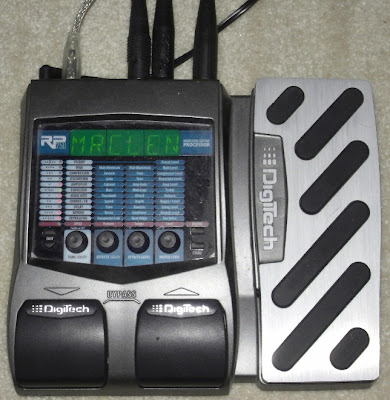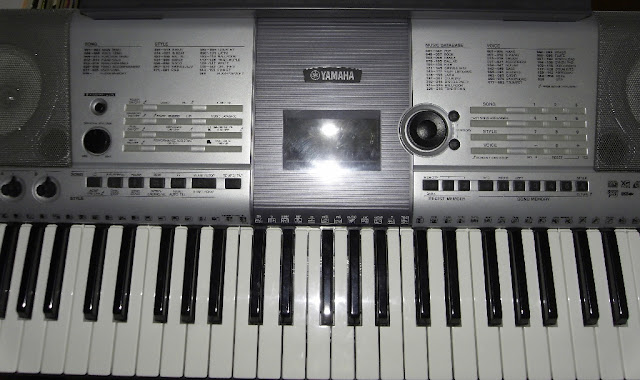One of the most important skills for any musician to develop
is a sense of rhythm. You may play
brilliantly, but if you can’t play in time with a metronome or other musicians,
then you'll be stuck in your basement forever. To some people, this skill
may come easy, while for others it will take some practice. But it can be learned.
PLAYING ALONG WITH THE RECORD IS NOT THE SAME THING
Now, just because you are able to play along with the record
doesn’t mean that you’ve mastered this skill.
When you play along with the record you have an example to follow and
are subconsciously picking up on other cues in the recording. None of these things will be present if it’s
just you and a metronome, or you and a bass player and a drummer.
METRONOME vs. DRUM MACHINE vs. KEYBOARD
Metronomes are really, really boring musically, but are also
pretty inexpensive. Consider stepping up
to a drum machine, or a multi-effects unit with a built in drum machine (I have the Digitech RP-250), or better yet an electronic keyboard (I have the Yamaha Portatone PSR-E403). All will provide you with a
variety of beats to practice with.
 |
| Digitech RP-250 Multi-Effects Pedal |
 |
| Yamaha Portatone PSR-E403 |
An electronic keyboard has some additional benefits:
- If it has auto-accompaniment, you can use it for one chord jams in a variety of musical styles, and
- The piano keyboard can be a useful tool for learning and understanding musical theory because it has easily recognizable patterns. Patterns are harder to see on the fretboard, so this can make it hard to grasp musical concepts and relationships.
 |
| Spot the C Major Scale on the Keyboard |
 |
| Now find it on the Fretboard !?!?!? |
USING A METRONOME
Hopefully I’ve convinced you that using a metronome has
many benefits:
· It's like truth serum for your playing. If your rhythm is off, it will show.
·
It will help you develop a feel for a steady rhythm. You'll play better when there isn’t a beat available.
·
It's great for rythym training exercises (e.g. learning to play 16th notes at 100 bpm)
The other most important thing to remember is to:
Start Slowly!
If you set a tempo that is too fast, then you will make
mistakes. Worse, you will probably
persist at that tempo (You’re probably telling yourself that “I should be able
to do this!”) and keep making more mistakes.
What ends up happening is that you practice making mistakes instead of
practicing playing correctly. Don't practice making mistakes!
Start with a tempo that you can play comfortably at without
any mistakes. Stick at this tempo and
develop a feel for the part you are practicing and develop your muscle memory
for playing it correctly. Slowly speed
up the tempo, even if it’s only 4 bpm at a time. If you speed up the tempo and find yourself
making mistakes, go back to the original tempo and practice playing it
correctly.
Remember, you are not going to get a new part up to tempo in one evening. It may take several days of slowly increasing the tempo to get up to speed.
While you are developing a feel for rhythm, you need to keep
it simple and slowly increase the difficulty.
Start with just whole notes and strum a chord on every beat 1. If this is going well, then try strumming on
beat 1 and beat 3 (i.e. half notes).
Next step up to quarter notes (i.e. beat 1, 2, 3 and 4), etc.
Alternatively, stick
with whole notes, but change chords every time beat 1 comes around. Try
the following I-vi-IV-V7 progression in the key of G:
G-Em-C-D7
I’ll talk more about this progression in a future
Confession.
FINISH ON A HIGH NOTE
The last thing you hear is what’s going to stick in your
brain. This is why it is critical that you
finish your practice session by playing the new part you’re learning
correctly. It’s great to increase the
tempo during your practice session and push yourself, but always finish
your session by slowing it down to a comfortable tempo and playing the part
correctly. This is what your brain will
remember.
No comments:
Post a Comment